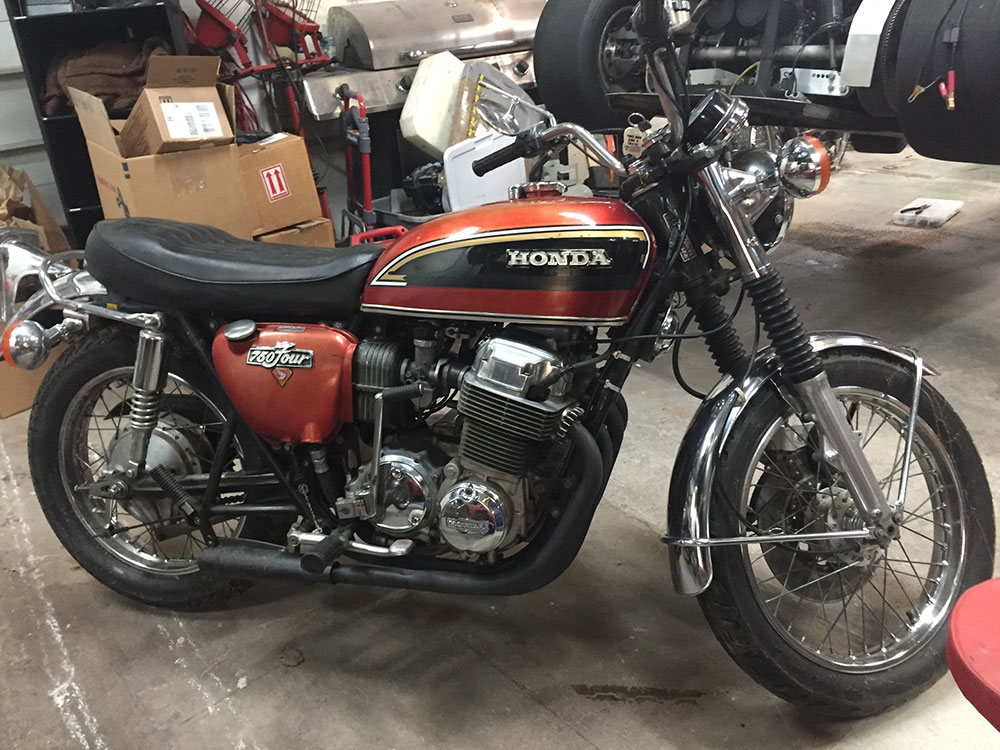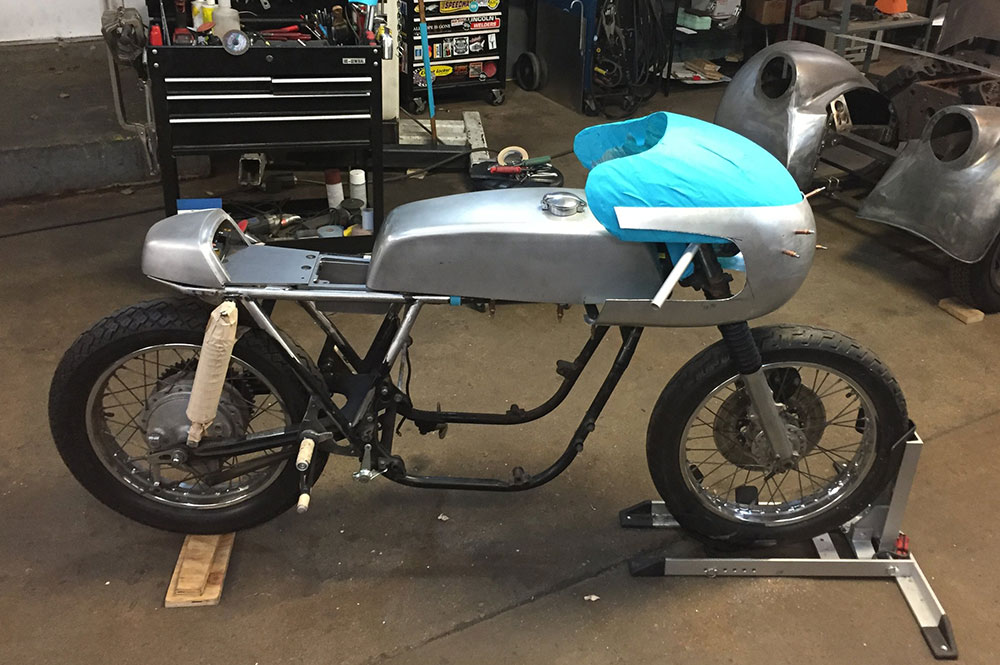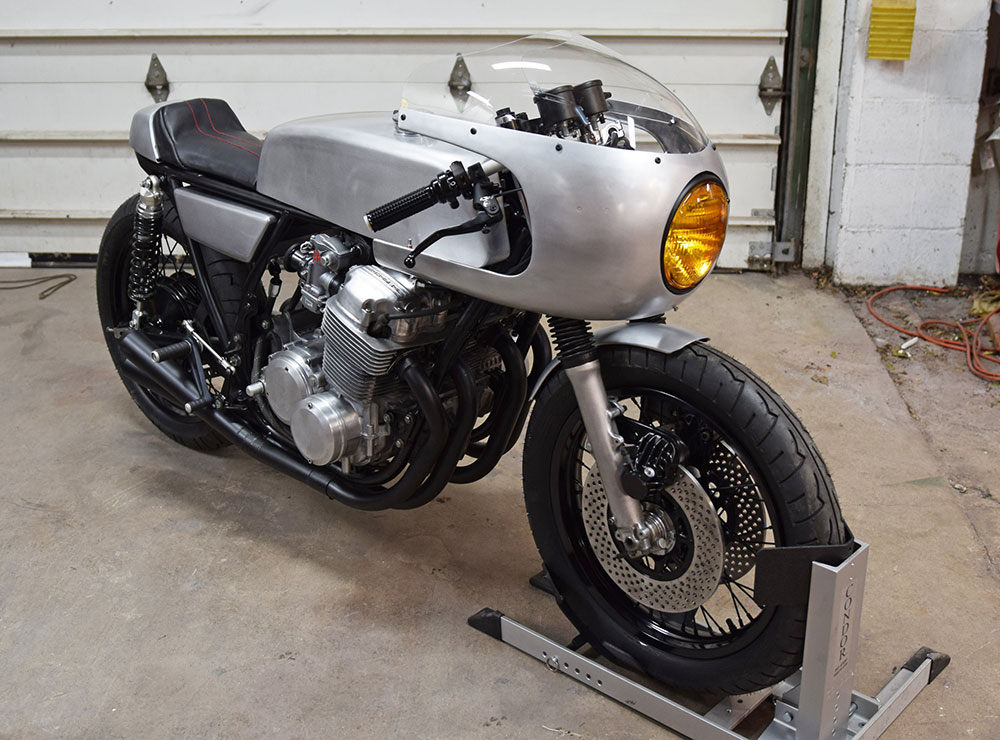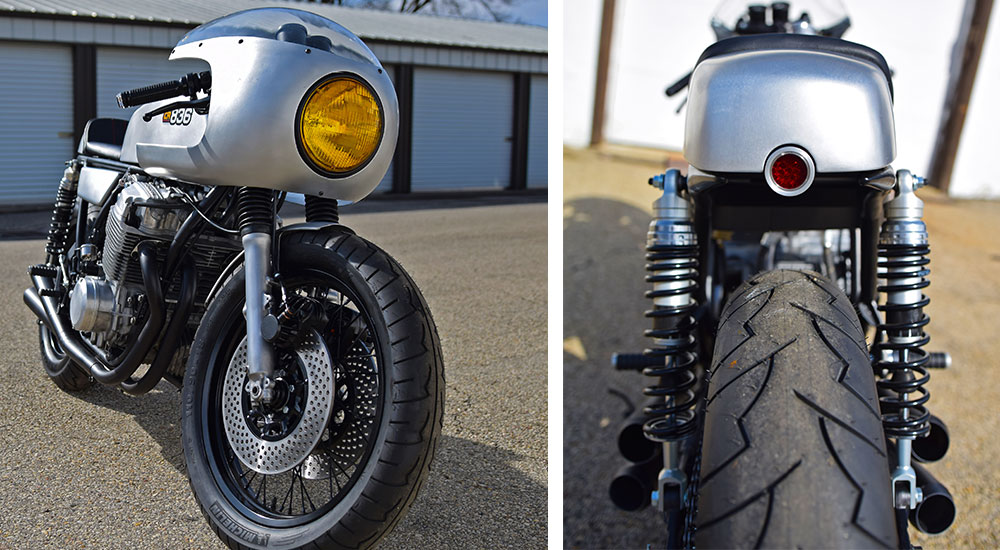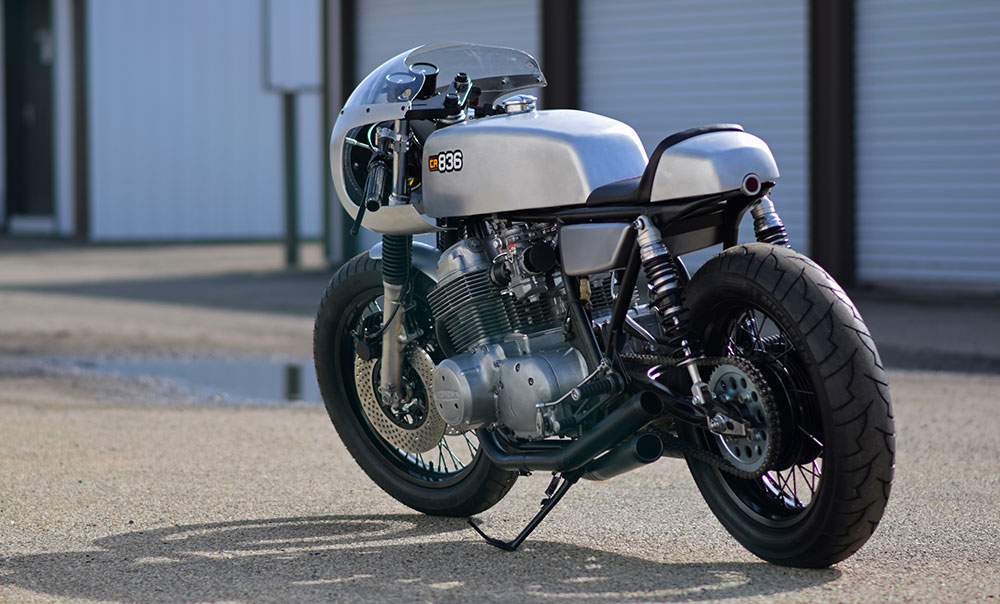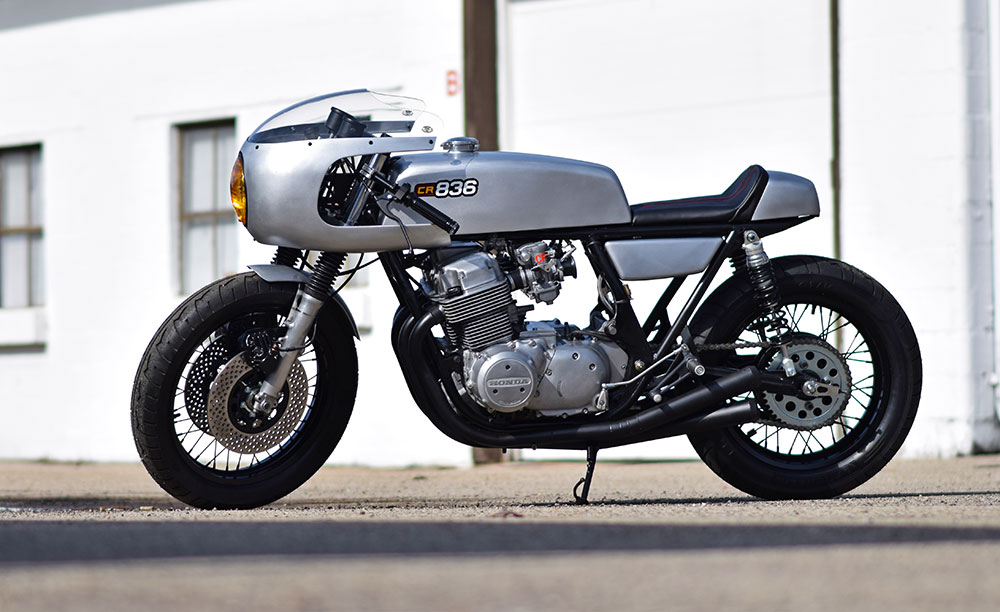Paul Magee’s 1974 Honda CB750
Paul Magee of 95 Customs knew he was going to completely tear down the 1974 Honda CB750; no nut or bolt would be left fastened. In rebuild and reassembly, however, he swore off all fiberglass and store-bought bodywork. The second rule was that the bike must be built around the rider without compromising performance. Third: even though it was to be a modern reinterpretation of Dick Mann’s 1970 Daytona 200-winning Honda CR750, this is not a show bike. This thing is getting ridden.
Magee, a 46-year-old from Troy, OH is the director of an industrial design firm. He caught the bike build bug when he toiled away on a Yamaha XS500 a few years ago but when he was finished with that bike he felt he didn’t go “far enough” with it.
A rider of two decades, his first bike was a Suzuki Bandit 400. But then he got into car racing, rebuilding cars and tinkered on bikes. He admits he got spread too thin and he sold off the racecars to focus on bikes. When he found the ’74 Honda in Michigan, it was tired, un-rideable, with 44,000 miles on it and had some questionable repairs and modifications. Despite the steep price of $2300, he rescued it and completely disassembled it.
“We designed the bike to be comfortable, functional and sexy,” Magee said. “Ohio Metal Shaping took the design intent and handcrafted each piece, detailing every part by hand. All body panels on the bike are unpainted bare metal. This was not just an aesthetic choice, but as a no-excuses testament to the high quality of the handcrafted metal work.”
The gas tank, fairing, front fender and rear cowl are aluminum. The oil tank, side cover, and frame plate are steel. Unique details include an incredibly innovative and complex frame plate that acts as a seat support, battery tray, gas tank hold-down, and support for electronics, oil tank, side cover, and brake light. And it’s not even a visible part.
The oil tank and side cover alone are works of art. The oil tank carries more volume than the factory tank, while being less than half the size in side view. The left side cover mimics the oil tank profile and conceals all the electronics and wiring. When the two parts are clam-shelled together, they look like one part, and with no exposed fasteners. This creativity and attention to detail allowed a visual openness typically only seen on smaller bikes, and almost never on a dry sump bike.
The engine has been bored out to 836cc, with increased compression and more aggressive cam profiles. The suspension has been rebuilt and updated with higher performance spring rates and damping capabilities. The bike weighs over 50 pounds less than stock (stock is 481-lbs.) with significantly more power and performance.
When asked how much money he has in the total project, Magee acknowledged how dangerous of a question that was. “If racing teaches you anything, it’s never do the math,” he said. But he did anyway.
PURCHASE PRICE
$2500 (including shipping)
PARTS PRICE
Appx. $12,500
METAL WORK
$8000
“So I am right around $23,000 not including any of my time.”
And, of course, Paul relied on DCC for many of those parts, including:
Dime City salutes the independent builders whether you’re on build number one or 100. Want to see your bike featured here? Click here for info.
DCC PARTS
div.container {
display:inline-block;
}
(via Dime City Cycles)

